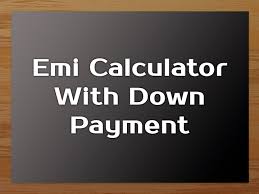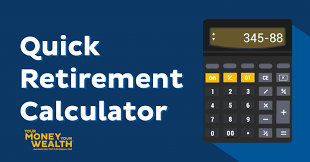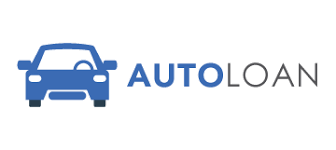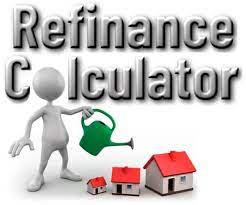Simplify your loan and mortgage planning with a powerful tool like Loan Down Payment Calculator (Mortgage Down Payment Calculator). This calculator provides valuable insights into the impact of down payments on your financial commitments, empowering you to make informed decisions for a secure and stable financial future.Calculator Down Payment will give you clear picture of your loan.
Down Payment with Upfront Cash Available
If the home price and down payment percentages are known, use the calculator below to calculate an estimate for an amount needed in cash available for upfront costs.
Down Payment with known Percentage
What is a Down Payment?
When you’re looking to purchase a home, you’ll likely come across the term “down payment.” But what is a down payment, and why is it so important? In this comprehensive guide, we’ll explain everything you need to know about down payments and how they can impact your homebuying journ What is a Down Payment? A down payment is a portion of the total cost of a home that a buyer pays upfront in cash. The rest of the cost is typically financed through a mortgage loan. The size of the down payment can vary, but it’s usually expressed as a percentage of the total purchase price. For example, a 20% down payment on a $200,000 home would be $40,000.
Why are Down Payments Important?
Down payments are important for several reasons. First, they show lenders that you’re serious about purchasing a home and that you have some skin in the game. Second, they can help you secure better mortgage terms, such as a lower interest rate or lower monthly payments. Finally, a larger down payment can help you avoid paying private mortgage insurance (PMI), which is typically required for buyers who put down less than 20% of the purchase price.
How Much Down Payment Do You Need?
The amount of down payment you’ll need depends on several factors, including the price of the home, your credit score, and the type of mortgage you’re applying for. In general, most lenders require a down payment of at least 3% to 5% of the purchase price. However, a larger down payment can help you secure better mortgage terms and avoid PMI.
How to Save for a Down Payment
Saving for a down payment can be a challenge, but there are several strategies you can use to make it easier. One option is to set up a dedicated savings account specifically for your down payment fund. You can also look for ways to cut expenses or increase your income to free up more money for savings. Finally, you may be able to take advantage of down payment assistance programs or gifts from family members.
Advantages and Disadvantages of a Down Payment
Advantages of a Down Payment
the benefits of a down payment for a home purchase and why paying upfront can pay off in the long run.
Lower Interest Rates -One of the biggest advantages of making a larger down payment is that it can lead to lower interest rates. Lenders typically view borrowers who make larger down payments as lower risk, which means they’re more likely to offer them better loan terms. A lower interest rate can save you thousands of dollars over the life of your mortgage, making a larger down payment a smart financial move.

Lower Monthly Payments- In addition to a lower interest rate, a larger down payment can also lead to lower monthly mortgage payments. By reducing the amount you borrow, you can lower your monthly payment and free up more cash for other expenses. This can be especially helpful for first-time homebuyers who may be stretching their budgets to make the purchase.
Avoiding Private Mortgage Insurance- Another advantage of making a larger down payment is that it can help you avoid paying private mortgage insurance (PMI). PMI is typically required for borrowers who put down less than 20% of the purchase price and can add hundreds of dollars to your monthly mortgage payment. By making a larger down payment, you can avoid this extra expense and put more money towards your principal and interest.
Greater Equity- Making a larger down payment can also help you build greater equity in your home more quickly. Equity is the difference between the current market value of your home and the amount you owe on your mortgage. By putting more money down upfront, you’ll owe less on your mortgage and own more of your home outright. This can be helpful if you’re planning to sell your home in the future or use it as collateral for another loan.
In conclusion, making a larger down payment for a home purchase can offer many advantages, including lower interest rates, lower monthly payments, and the ability to avoid PMI. It can also help you build greater equity in your home more quickly, which can be beneficial in the long run.
Disadvantages of a Down Payment
the potential downsides of a down payment and whether it’s always the right choice for every homebuyer.
Reduced Cash Flow -One of the biggest disadvantages of a down payment is that it can reduce your cash flow. By putting a large amount of money down upfront, you’ll have less cash on hand for other expenses, such as emergencies, renovations, or unexpected bills. This can put you in a difficult financial position if you don’t have a solid emergency fund or if unexpected expenses arise.
Delayed Homeownership- Another potential disadvantage of a down payment is that it can delay homeownership. Saving up for a large down payment can take time, especially if you’re working with a limited income or living in a high-cost area. This can delay your plans to become a homeowner, which can be frustrating if you’re eager to start building equity in a property.
Opportunity Cost -Another potential disadvantage of a down payment is the opportunity cost. When you put money into a down payment, you’re effectively tying up that money in your home. While owning a home can be a good investment, it’s not always the best use of your money. If you have other financial goals, such as saving for retirement or starting a business, putting a large amount of money into a down payment could prevent you from achieving those goals.
Limited Flexibility -Making a large down payment can also limit your flexibility as a homeowner. If you’ve put a significant amount of money down on your home, you may be hesitant to sell or move, especially if the housing market is down. This can limit your ability to make changes in your life or take advantage of new opportunities.
In conclusion, while a down payment can offer many advantages, there are also some potential downsides to consider. These include reduced cash flow, delayed homeownership, opportunity cost, and limited flexibility. It’s important to weigh the pros and cons of a down payment and make an informed decision based on your financial situation and goals.
Impact of Down Payment on Interest Rates
We’ll explore the impact of down payment on interest rates and how much you should put down to get the best rate.
Understanding Interest Rates Before we dive into the impact of down payment of interest rates, it’s important to understand how interest rates work. Interest rates are determined by a variety of factors, including the lender’s risk, the market, and the borrower’s creditworthiness. A lower interest rate means you’ll pay less interest over the life of your loan, which can save you thousands of dollars.
So, how does the down payment affect interest rates?
In general, the more money you put down upfront, the lower your interest rate will be. This is because lenders view borrowers who put down a larger down payment as less risky, as they have more equity in the home and are less likely to default on the loan. On the other hand, borrowers who put down a smaller down payment may be seen as riskier and may be offered a higher interest rate as a result.
How Much Should You Put Down?
Now that you understand the impact of down payment on interest rates, you may be wondering how much you should put down to get the best rate. The answer will depend on your specific situation and financial goals. In general, it’s recommended to put down at least 20% of the home’s purchase price to avoid paying private mortgage insurance (PMI) and to get the best interest rate. However, if you can’t afford a 20% down payment, you may still be able to get a competitive interest rate by putting down as much as you can.
Other Factors That Affect Interest Rates
While down payment is an important factor that can impact your interest rate, it’s not the only factor to consider. Other factors that can affect your interest rate include your credit score, debt-to-income ratio, and the type of loan you’re applying for. It’s important to work on improving your credit score and reducing your debt before applying for a mortgage to get the best interest rate possible.
In conclusion, the down payment you make on your home can have a significant impact on your interest rate. The more money you put down, the lower your interest rate will likely be. However, it’s important to consider your specific situation and financial goals when deciding how much to put down.
LARGE OR SMALL: HOW BIG A DOWN PAYMENT TO MAKE?
the advantages and disadvantages of making a large or small down payment, and help you decide how much to put down on your next home.
Advantages of Making a Large Down Payment
One of the biggest advantages of making a large down payment is that it can help you save money in the long run. By putting down more money upfront, you can lower your monthly mortgage payments and pay less interest over the life of the loan. In addition, a large down payment can make you a more attractive borrower to lenders, which can help you get approved for a larger loan or a lower interest rate.
Disadvantages of Making a Large Down Payment
While there are many advantages to making a large down payment, there are also some potential disadvantages to consider. One of the biggest drawbacks is that it can tie up a significant amount of your cash upfront, which may limit your ability to invest in other opportunities or handle unexpected expenses. In addition, a large down payment may not always be necessary or beneficial, especially if you have other high-interest debts or financial goals that could benefit from your cash.
Advantages of Making a Small Down Payment
Making a small down payment can also have its advantages. For example, if you’re a first-time homebuyer or have limited cash on hand, a small down payment can make it easier to get into the housing market. In addition, if you have other financial goals or investments that could benefit from your cash, making a smaller down payment can help you keep your options open.
Disadvantages of Making a Small Down Payment
However, making a small down payment can also have some potential drawbacks. For one, you’ll likely have to pay private mortgage insurance (PMI), which can add to your monthly mortgage payments and increase the total cost of your loan. In addition, making a small down payment may make it more difficult to get approved for a loan or to get a competitive interest rate.
How to Decide How Much to Put Down Deciding how much to put down on your home can be a difficult decision, but there are some key factors to consider. These include your financial goals, your ability to handle unexpected expenses, your debt-to-income ratio, and your credit score. In general, it’s recommended to put down at least 20% of the home’s purchase price to avoid paying PMI and to get the best interest rate.
TIPS FOR ACCUMULATING THE DOWN PAYMENT
Create a budget: Start by reviewing your monthly income and expenses. Figure out how much you can set aside each month for your down payment fund. You may need to cut back on expenses or find ways to increase your income to free up more cash.
Automate savings: Make it easy on yourself by setting up an automatic transfer from your checking account to a savings account each month. This way, you won’t have to think about it, and your down payment fund will grow over time.
Reduce debt: The less debt you have, the more money you can put towards your down payment fund. Focus on paying off high-interest debt like credit cards and personal loans first.
Explore down payment assistance programs: There are many government and nonprofit organizations that offer down payment assistance programs to eligible homebuyers. Do some research to see if you qualify for any of these programs.
Consider a side hustle: If you’re struggling to save money from your day job, consider starting a side hustle. You can sell items online, freelance, or take on a part-time job to bring in some extra cash.
Tap into your retirement account: If you have a 401(k) or IRA, you may be able to borrow from it to fund your down payment. However, this should be a last resort, as it can have significant long-term consequences on your retirement savings.
Get a gift from family: If you have generous family members, they may be willing to give you money towards your down payment. Just be sure to follow the IRS guidelines on gift giving to avoid any tax implications.
The Power of a Down Payment Calculator
Whether you’re planning to buy a home or finance a major purchase, understanding the significance of a down payment is key to securing a sound financial future. A Down Payment Calculator is your compass in navigating this important financial decision. In this article, we’ll explore the ins and outs of this valuable tool and how it can help you make informed choices.
What Is a Down Payment Calculator?
A Down Payment Calculator, also known as a Loan Down Payment Calculator or Mortgage Down Payment Calculator, is a financial instrument that empowers you to determine the ideal down payment amount when making a significant purchase, such as a home, car, or even college tuition. This tool is especially vital for homebuyers and borrowers seeking to optimize their financial strategies.
How Does a Down Payment Calculator Work?
Using a Down Payment Calculator is a straightforward process:
Input Loan Details: Begin by entering the specifics of your loan, including the total loan amount, interest rate, and loan term.
Specify Down Payment Percentage: Choose the down payment percentage you’re considering. The calculator will often provide you with options, such as 5%, 10%, 20%, or more.
Get Instant Results: Once you’ve provided the necessary data, the calculator will generate immediate results. You’ll see the down payment amount required, the total loan amount, and the impact on your monthly payments.
Why Use a Down Payment Calculator?
Here are compelling reasons to utilize a Down Payment Calculator:
Budget Management: Determine the down payment that aligns with your budget and financial goals.
Interest Savings: A larger down payment can lead to lower interest charges over the life of the loan.
Affordability Assessment: Gauge whether you can comfortably afford the purchase while considering the down payment’s impact on monthly payments.
Comparison Tool: Experiment with various down payment percentages to see how they affect your financial commitments.
Down Payment Calculator vs. Mortgage Calculator: What’s the Difference?
While both calculators play crucial roles in the homebuying process, they serve distinct purposes. A Mortgage Calculator focuses on estimating monthly mortgage payments, including principal and interest. In contrast, a Down Payment Calculator concentrates on determining the optimal down payment amount.
In Conclusion
A Down Payment Calculator is a financial compass that helps you chart your course toward a secure financial future. It empowers you to make informed decisions, whether you’re purchasing a home, car, or any significant investment. By leveraging this tool effectively, you can ensure that your down payment aligns with your financial goals and paves the way for a prosperous financial journey.
FAQ on Down Payment
Are you considering a major purchase and wondering about the ins and outs of down payments? Here’s a collection of frequently asked questions (FAQ) to help you better understand the significance of down payments and how they impact various financial decisions.
Q1: What is a down payment?
A1: A down payment is an initial payment made when purchasing a big-ticket item, such as a house, car, or even education. It’s a percentage of the total cost that you pay upfront.
Q2: Why is a down payment important?
A2: A down payment serves several purposes. It reduces the amount you need to borrow, lowers your monthly payments, and can help you secure better loan terms. It also shows your commitment and financial stability to lenders.
Q3: How much should my down payment be?
A3: The ideal down payment percentage varies based on your financial situation, the type of purchase, and lender requirements. Common percentages are 20% for homes and 10-20% for cars, but it can be lower or higher.
Q4: Can I make a down payment that’s less than 20%?
A4: Yes, many lenders accept lower down payments, especially for homes. However, this might result in higher monthly payments and may require additional expenses, like private mortgage insurance (PMI).
Q5: What are the advantages of a larger down payment?
A5: A larger down payment can reduce your loan amount, lower your interest costs, and decrease your monthly financial obligations, making it easier to manage your finances.
Q6: How can I save for a down payment?
A6: You can save for a down payment by creating a dedicated savings account, cutting unnecessary expenses, increasing your income, and setting specific savings goals.
Q7: Are there down payment assistance programs available?
A7: Yes, various government and nonprofit organizations offer down payment assistance programs that can help eligible buyers with their down payment requirements.
Q8: Can I use gifted funds for a down payment?
A8: In many cases, you can use gifted funds from family members to cover your down payment, but there may be documentation requirements to prove it’s a gift and not a loan.
Q9: Are there tax benefits associated with down payments?
A9: While down payments themselves don’t have direct tax benefits, mortgage interest and property tax deductions for homeowners can lead to tax savings.
Q10: How do I calculate the ideal down payment amount?
A10: You can use a Down Payment Calculator to determine the ideal down payment percentage based on your financial goals, purchase price, and loan terms.
Q11: Is a down payment required for all types of loans?
A11: Down payments are typically required for large purchases like homes and cars. Smaller loans, like personal loans, may not require a down payment.
Q12: Can I change my down payment amount after I’ve started the loan process?
A12: In most cases, you can adjust your down payment amount before finalizing the loan agreement. However, it’s essential to consult with your lender to understand any potential implications.
Legal Notices and Disclaimer
All Information contained in and produced by the ModernCalculators.com is provided for educational purposes only. This information should not be used for any Financial planning etc. Take the help from Financial experts for any Finace related Topics. This Website will not be responsible for any Financial loss etc.





